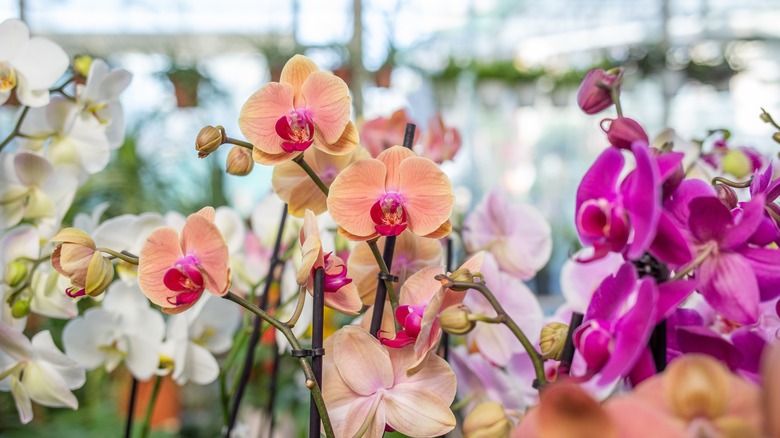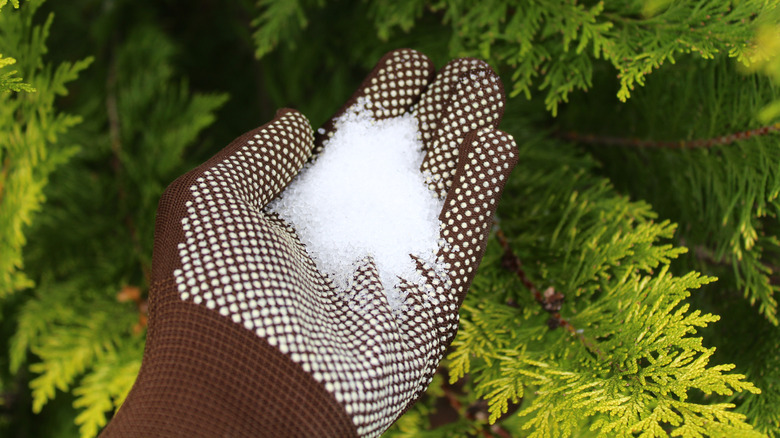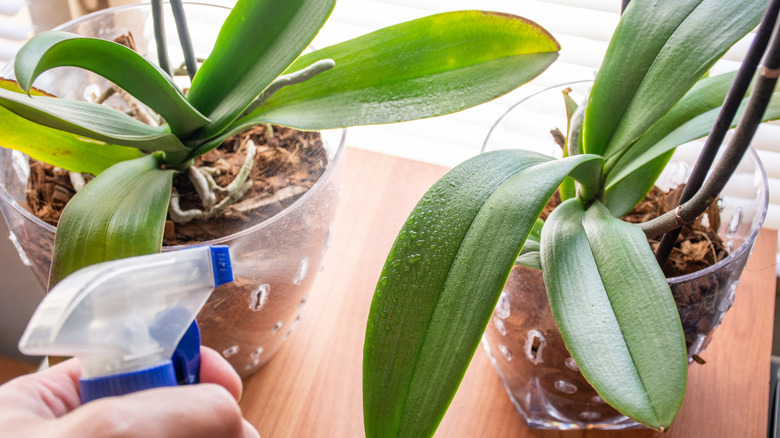The Common Household Product That Can Save Your Orchids
Orchids are flowering plants belonging to the Orchidaceae family. With around 28,000 species, they are found in every continent in the world except Antarctica, showcasing an array of colors, shapes, and fragrances. In fact, orchids are one of the most diverse groups of flowering plants and are known for their variety of striking, long-lasting blooms.
However, though relatively easy to grow indoors, these flowers can sometimes come with challenges. Perhaps yours has yellowing leaves or appears like it has stopped growing altogether. If so, one common household product could save your dying orchids: Epsom salt. While this item is not the all-around solution it is often touted to be, there is anecdotal evidence that Epsom salt could be the cure to reviving an orchid that's suffering from a magnesium deficiency.
Before you rush to fertilize your plant with Epsom salt, however, it's important to ensure you're correctly caring for your indoor orchid, as the symptoms could be stemming from another issue. Many orchids are epiphytic, meaning they are adapted to growing on trees and shrubs. Therefore, instead of growing in soil, they need to be grown in bark chips or sphagnum moss. Orchids also require bright light and humidity, meaning that a bright bathroom could be the perfect room to grow orchids in. As for watering needs, these flowers require soil that's moist, but beware of overwatering. If you find that none of these care concerns are the issue, Epsom salt could be the saving grace your plant needs.
How can Epsom salt save orchids with magnesium deficiencies?
Orchids, like many plants, require magnesium for various physiological processes, including chlorophyll production, enzyme activation, and nutrient uptake. Orchids deficient in magnesium will be less able to absorb essential nutrients, such as phosphorus or nitrogen. These macronutrients are responsible for lush growth, flowering, and root development, with a deficiency leading to overall stunted growth. A magnesium deficiency can also impair an orchid's ability to photosynthesize, leading to reduced energy production, poor growth, and chlorosis (leaf yellowing). Without adequate magnesium, orchids struggle to maintain their vibrant colors and robust health.
Fortunately, Epsom salt, chemically known as magnesium sulfate, is a mineral compound consisting of magnesium, sulfur, and oxygen. Therefore, applying Epsom salt will provide a targeted application of magnesium to the plant. Restoring nutrient levels to normal, Epsom salt can save a magnesium-deficient orchid from eventual decline. However, it is worth noting that adding Epsom salt to a plant that already has sufficient nutrients is not necessary. In fact, applying it to a substrate that already has enough magnesium can actually restrict the uptake of some nutrients such as calcium.
How to treat orchids with Epsom salt
Before applying Epsom salt to your orchid, you first need to identify that the problem is, in fact, a magnesium deficiency. Symptoms include yellowing, known as chlorosis, of the older leaves as well as a reddish-purple coloring if they are exposed to cool temperatures. Along with these specific symptoms, you may also notice an overall loss of vigor in your orchid.
Once you've identified these issues, there are various ways you can apply Epsom salt to orchids. The first involves incorporating it directly into water. Simply dissolve 1 tablespoon of Epsom salt per gallon of water and use this solution to water your orchids as a single treatment during the growing season. If needed, this treatment can be repeated.
Another option is foliar spraying, where a diluted Epsom salt solution is sprayed directly onto the leaves of the orchid. Dissolve 1 tablespoon of Epsom salt into a gallon of water and spray it onto the foliage every two weeks for two to three applications. This allows for quick absorption of nutrients through the leaves, bypassing the root system. Ensure to mist both the upper and lower surfaces of the leaves for maximum absorption. However, be aware that Epsom salt foliar feed can cause leaf burn if not adequately diluted, so always err on the side of caution if you are unsure.


